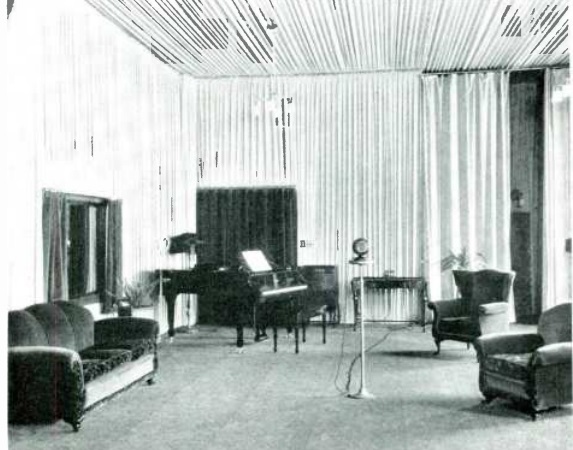 Seventy-five years ago, station CKY in Winnipeg asked its listeners to submit reminiscences of the early days of radio. Many of these were published the the station’s monthly program guide, Manitoba Calling. This one appeared in the April, 1945, issue, which also carried the photo above of the station’s studio in 1928:
Seventy-five years ago, station CKY in Winnipeg asked its listeners to submit reminiscences of the early days of radio. Many of these were published the the station’s monthly program guide, Manitoba Calling. This one appeared in the April, 1945, issue, which also carried the photo above of the station’s studio in 1928:
This one was sent in by W.J. Cooper of Steep Rock, Manitoba. The magazine noted that his was a familiar name as a loyal listener in the early days of the station.
My experiments in radio go back to the days when it was called wireless telegraphy. I think it was in about 1916 that I got some spark coils and rigged up a spark set. For a detector
I used two carbon blocks filed to a sharp edge. They stood on end and a fine needle was laid across the sharp edges. Our two stations were only a couple of hundred yards apart, but the
junk actually worked.My next experience came in about 1922 -1923. Radio stations were springing up all over the continent. There were several stations operating in Winnipeg. (2 in 1923). They quit when
CKY took over broadcasting in Manitoba in 1923. My first set was almost entirely home -made, with the exception of the tube, socket, phones, and batteries. It took up all the space in a cabinet almost as big as a suitcase. The hook-up was a spider-web 3 circuit, single tube. After many nights’ efforts it was made to work. The first reception heard over it was the voice
of the announcer (now editor of Manitoba Calling). He closed by saying “goodbye everybody” and by blowing the call letters CKY on a whistle….One of the big drawbacks of the early radio sets was that there were too many controls for anyone but the builder to know how to operate. One of the well known super-heterodyne sets had about 50 knobs, dials, verniers, jacks, switches and a couple of meters . . . Hardly anyone but the demonstrators could operate them. However, with the coming of sets with fewer controls, business soon picked up…. CKY was responsible for many pioneer achievements in Canadian broadcasting. Programmes were picked up by a listener’s receiving set in Winnipeg. (Actually two sets, one in Fort Rouge and one on Atlantic Ave., operated by Manitoba Telephone System officials). One night they broadcast the Night Hawks programme from WDAF in Kansas City.
